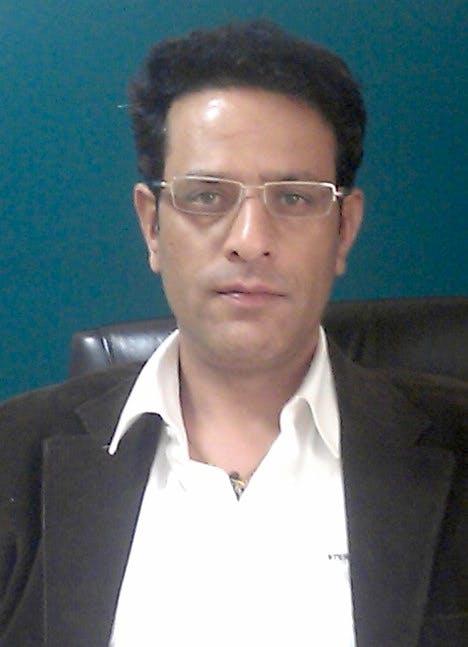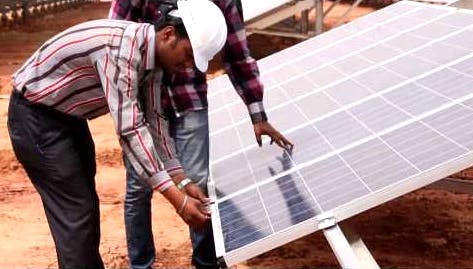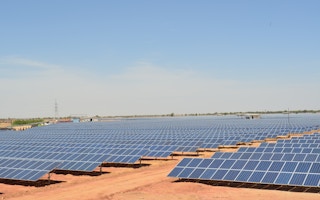Engineer Bikesh Ogra has led the growth of the solar business of Indian firm Sterling and Wilson Limited since it started in 2010. Established in the power sector for nearly 90 years, Sterling and Wilson originated as a family business known as Wilson Electric Works. It is this decades of experience in the power sector that has enabled the firm to break into the solar market in India.
The company has been providing services in electricals, HVAC (or heating, ventilation and air conditioning), transmission and distribution, and low voltage systems, among others. It has added these different services throughout the years, building on its core expertise in electricals and by catering to the growth of the private sector in India. Some of its clients include Citibank, Dell, Intel, Siemens, Rustomjee Natraj IT Park, Supreme Tower, Lulu International Mall, and Holiday Inn.
In 2010, Sterling and Wilson decided to branch out to solar as the Indian government became more accepting of renewable energy, creating favourable policies to support the solar industry. Eng. Ogra, in particular, noted the strong demand for solar energy in the country, which was rising on the back of a ballooning population and burgeoning economy that needed energy that is not vulnerable to the changing oil and gas prices of the world market. Energy security is still a challenge in India, and the firm recognised the government’s initiative to address this, as well as the need to attain sustainable growth and combat climate change.
Eng. Ogra has built the solar business by promoting the sustainability of its energy efficient solutions such as photovoltaic (PV) technologies and concentrated solar power technologies, and by leveraging on its strengths. The firm says it can provide solutions from site evaluation to operation and maintenance of a solar power plant, and has worked on different projects in different states of the country, where they have been exposed to different terrains and working conditions. One of the largest plants they have done, a 36MW plant, was completed in 115 days.

Eng. Bikesh Ogra, president-solar of Sterling and Wilson
Their solar solutions ensure a cost-quality balance while meeting international standards, Eng. Ogra emphasised. As a result, their solar projects are recognised by both private and public sectors, and not just in India.
Having established a name in India, Sterling and Wilson is now eyeing the solar market in the Kingdom of Saudi Arabia, which he thinks has the potential to be a “power supermarket” or one of the biggest producers of energy worldwide that can sell its energy resources – including solar once it starts investing on this – to other countries. This is why it has invested resources into the market, complete with an international office in Riyadh (which is supported by their other international offices in Dubai, Qatar, Kuwait, and in select African countries).
It also took part in last year’s Solar Arabia Summit in Riyadh and in the 4th Annual Qatar Alternative Energy Investors Summit, both organised by events firm naseba.
In this interview, he speaks to Eco-Business about the challenges and opportunities of solar power in both the Indian and Saudi markets.
You’ve been the president for Solar of Sterling and Wilson since 2010, when the company first started its solar business. Why did it decide to venture into solar?
Before entering into any market, Sterling and Wilson studies basic things such as market demand and supply, market competition, and the relevance of our expertise and capabilities to supply or fulfil that demand.
In India, the demand for solar energy is increasing because the country is still a developing economy, with over one billion in population highly dependent on imported oil and gas that is subject to volatile energy prices. It needs its own energy sources that can sustain its national development.
So to address this, the government of India began supporting solar energy, putting policies and programmes in place like the Jawaharlal Nehru National Solar Mission, Renewable Energy Certificates, and State Government Solar Schemes. The Jawaharlal Nehru National Solar Mission (JNNSM), by the Ministry of New and Renewable Energy, was launched in January 2010 by the Prime Minister and it aims for the deployment of 20,000 MW of grid-connected solar power by 2022.
In addition, the government plans to reduce the cost of solar power generation with additional policies and frameworks, agressive R&D, large-scale deployment targets, and spurring domestic production of key raw materials and components.
“
India had a cumulative installed PV capacity of 1,962 MW as of last October. Our installed capacity is 150 MW. That is less than 10 per cent, which may seem small, but if you assess the solar sector in India, it is an achievement to have installed such a capacity within only three years…
Eng. Bikesh Ogra, president-solar, Sterling and Wilson
Taking these factors into consideration, our firm’s expertise and capabilities can be applied to the solar sector. Solar was a natural extension of our business offerings, thanks to our specialty in electrical engineering and capabilities in project management and execution which we have developed over the last 86 years. Sterling and Wilson has been in the electrical contracting sector since it started in 1927.
Isn’t there some conflict between offering renewable energy solutions while also providing electrical services from fossil fuel-powered plants?
No, in fact, both sectors have a common purpose, which is to generate and supply electricity. We understand the needs of our power consumers, their paying capabilities and market factors that drive the electricity demand. We have developed an expertise to meet those needs.
The two are are sub-sectors of the larger electricity sector, the only difference is the type of fuel used to generate the electricity. Our move to offer renewable energy solutions was a response to demand from our customers.
Sterling and Wilson now has 150 megawatts (MW) worth of solar projects in India. What is the overall potential for solar energy across India?
India had a cumulative installed PV capacity of 1,962 MW as of last October. Our installed capacity is 150 MW. That is less than 10 per cent, which may seem small when compared to the total installed PV capacity. But if you assess the solar sector in India, it is an achievement to have installed such a capacity within only three years in a market characterized with low entry barriers and tough competition, and proliferated by a huge number of domestic and international EPC (engineering, procurement, construction) contractors.
Currently, the competition is becoming tougher day by day due to the huge potential of the solar sector in India. The country has more than one gigawatt of solar projects to offer in 2014, including 750 MW of National Solar Mission. This is a government tender for the setting up of grid-connected solar PV projects totaling a capacity of 750 MW, under the second phase of the JNNSM.
The company has declared its intent to venture into the Kingdom of Saudi Arabia - what’s the potential of this market?
Saudi Arabia offers tremendous potential as there are many possible applications of solar energy. It could be used in power generation, manufacturing, desalination, and in industrial applications.
We see two types of opportunities here, short-term and long-term. Currently, the opportunity is to present and use solar energy as a cheap source of energy, to save on oil and fuel. For future or long-term opportunities, Saudi Arabia can become a leader in solar energy, with technical expertise and capabilities that it can export to other countries. Saudi Arabia can become an electricity-exporting nation, not just a place known for its oil reserves. This will give the country a strategic advantage in international politics.
What solar trends do you foresee in the region and which of these do you plan to maximise?
Goverment solar schemes and public tenders will create big opportunities for solar companies. As the Middle East continues to develop and diversify its energy portfolio, firms will want to take advantage of this government support.
Also, more people will start using solar power. There will be an increase in the use of solar energy in residential projects and for private consumption, but these opportunities are minimal in size compared to public tenders.

Sterling and Wilson, an Indian electrical services firm with international operations, has grown its solar business since it started in 2010, and now it is expanding in countries like Saudi Arabia. Image: Sterling and Wilson
Our strategy is to target both public tenders as well as consumers. But we expect a good chunk of our solar business to come from public tenders. Our focus for the next year will be on these opportunities, and so far we are getting positive results. In Jordan, we are one of the pre-qualified bidders for the Ministry of Energy and Mineral Resources’ EPC contract for a 65 to 75 MW solar power plant to be built in El Quweira, South of Jordan.
Lastly, what are some of your milestone solar projects and why?
The five-megawatt solar project for Welspun Energy in Andhra Pradesh, India is an achievement for the company. It was ranked as one of the best performing solar power plants in India by the Ministry of New and Renewable Energy. Also, it was bestowed with the Best EPC Award in 2013 by Ernst & Young. The plant was evaluated based on its size, performance, adherence to completion deadlines, workmanship and total installed capacity.
Last year, we also offered turnkey EPC solutions to two of the biggest solar power projects (36 and 30 MW in size) under the Renewable Energy Certificate mechanism in India. We consider this a milestone given that the market is still young and developing.











